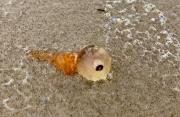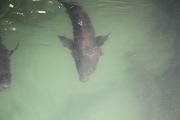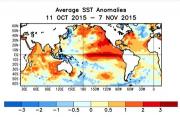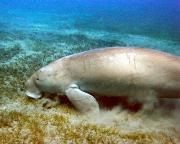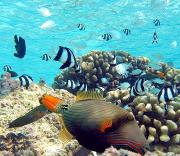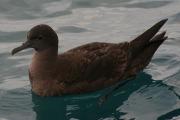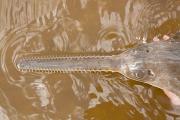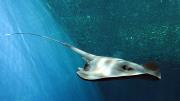Radio Program
Our regular Science and the SeaTM radio program presents marine science topics in an engaging two-minute story format. Our script writers gather ideas for the radio program from the University of Texas Marine Science Institute's researchers and from our very popular college class, Introduction to Oceanography, which we teach to hundreds of non-science majors at The University of Texas at Austin every year. Our radio programs are distributed at to commercial and public radio stations across the country.
Keeping a close eye and a firm hand on fish stocks seems to keep them in pretty good shape. On the other hand, not keeping an eye on them, and letting fishing fleets do as they wish, doesn’t work out so well.
Lots of stories these days talk about how fish stocks are declining around the world. And in many cases, that’s certainly true. And it was true for many other cases until the last couple of decades.
You never know what you might find on the beach. The variety of plants, animals, and objects just keeps growing. In part, that’s because of our changing climate. As the oceans get warmer, new critters turn up on beaches where they’ve never been seen before.
One recent newcomer was an odd creature that washed ashore on Mustang Island in Texas, near Corpus Christi. Beachgoers reported seeing several of them. They looked like a miniature version of something from an old sci-fi flick: the crawling eye.
One of the most expensive commodities on Earth is the swim bladder of a large fish found in the Gulf of California. It’s a delicacy in China, where it’s thought to heal arthritis and other ailments. A single bladder can fetch thousands of dollars. Don’t try finding one, though. The fish is endangered, so it’s illegal to catch, sell, or even have one.
The totoaba is in the family of drums and croakers. In fact, it’s the largest of all drum species. An adult can be six feet long and weigh more than 200 pounds.
The last El Niño was a whopper. It produced a monster storm season in the North Pacific, extreme drought in the Caribbean and parts of Africa, and a jump in global temperatures. And it kept the southern United States cool and wet.
That was in 2015 and ’16 -- about two decades after the previous big El Niño. And based on that trend, we might expect the next big one in the mid-2030s.
Recent studies, though, suggest the cycle could be speeding up. If climate change continues at its present rate, big El Niños and La Niñas could happen twice as often -- roughly every decade.
If you’re spending an afternoon on your favorite bay, you probably don’t want to see any sharks gliding through the water. But the bay itself just might. Without sharks, the ecosystem can change -- in ways that can be bad for the bay and anyone living near it. Researchers studied how that might play out in Shark Bay, on the western tip of Australia.
Seagrass carpets about 1500 square miles of the bay floor. It acts as a buffer against storms, provides habitat for marine life, and filters the water. It also provides food for the “sea cows” known as dugongs.
Marine biology combines old and new, stinky and sterile -- often in a single project. In 2016, for example, researchers gathered fish from a coral reef in the Pacific Ocean. They cut the fish open to see what they’d eaten, then used the latest technology to analyze the DNA of what they found.
The study was designed to help us learn how changes in coral reefs caused by people are changing the balance of life on the reefs. The loss of a few species can ripple along the food chain, causing big changes on the entire reef.
It’s hard to imagine that land around the top of the northern Pacific Ocean would have been more hospitable during the last ice age than it is today. But there’s evidence of just that. The conditions might have allowed people to begin the migration from Asia to the Americas. And a recent study suggested a possible reason for the milder weather: stronger currents in the North Pacific.
If you’re a fan of Alfred Hitchcock movies, this plot might sound familiar: Thousands of angry seabirds attack a town on the California coast. They ram into cars, houses, telephone poles, and everything else. The sound is deafening. Scared residents lock their doors and call for help.
If you’re thinking of “The Birds,” you’re right -- and wrong. That is the outline of Hitchcock’s 1963 classic. But it also was a real event.
Southern Florida has been seeing more of a fish that had just about vanished from its coastline. Most of the rest of the world, though, has been seeing less of it. And without some urgent action, before too long they might not see it at all.
When researchers at Oregon State University were studying the rumbling of Earth’s crust about a hundred miles offshore, they noticed something interesting. Whenever fin whales were around, they got some especially strong signals. So they’ve suggested that the whales might make good research assistants -- they could help probe the ocean floor and below.
That’s not the only way in which marine creatures could help us learn about the bottom of the sea. Scientists in Japan reported that sting rays and electric rays might help map the ocean floor.


